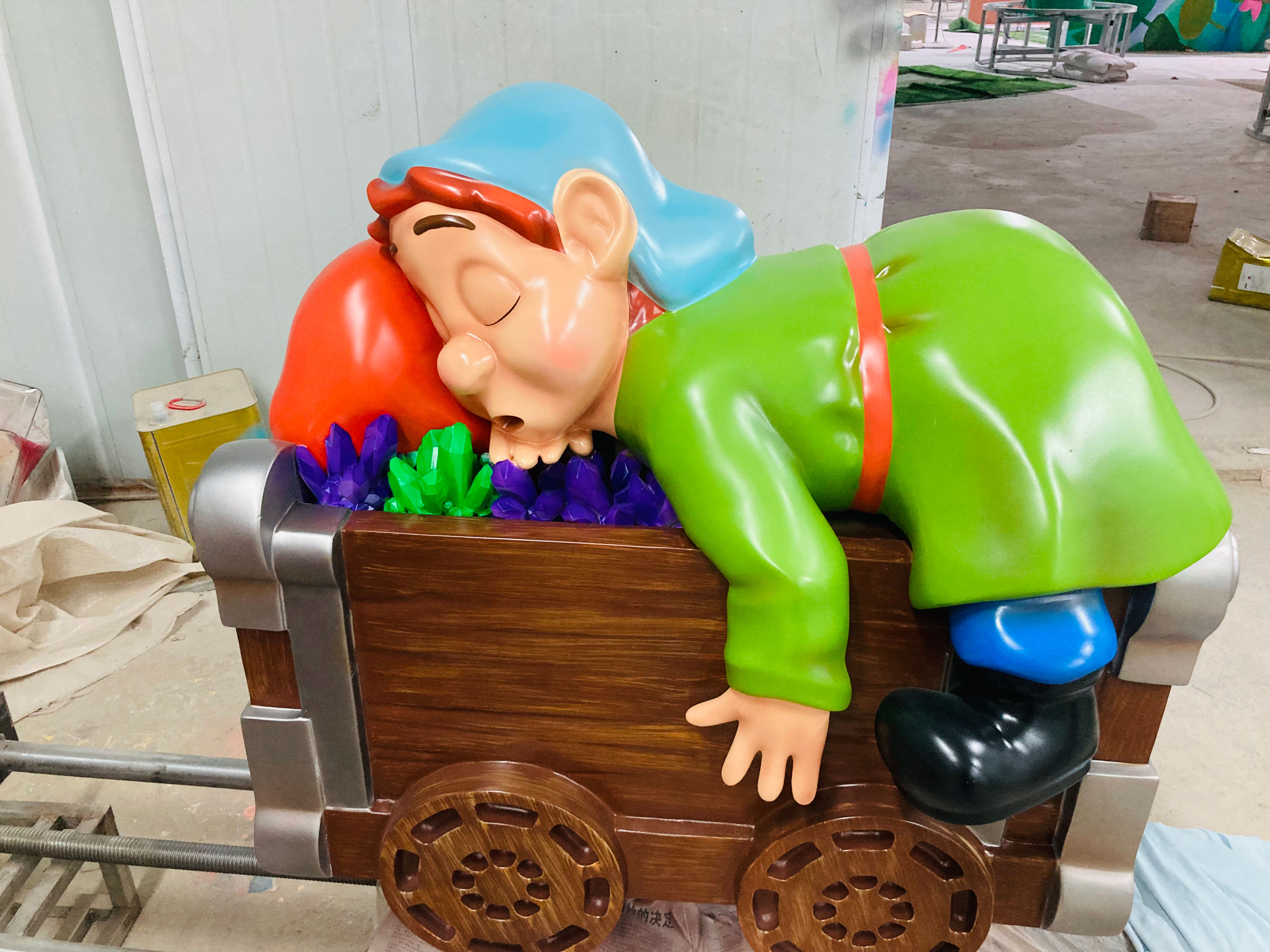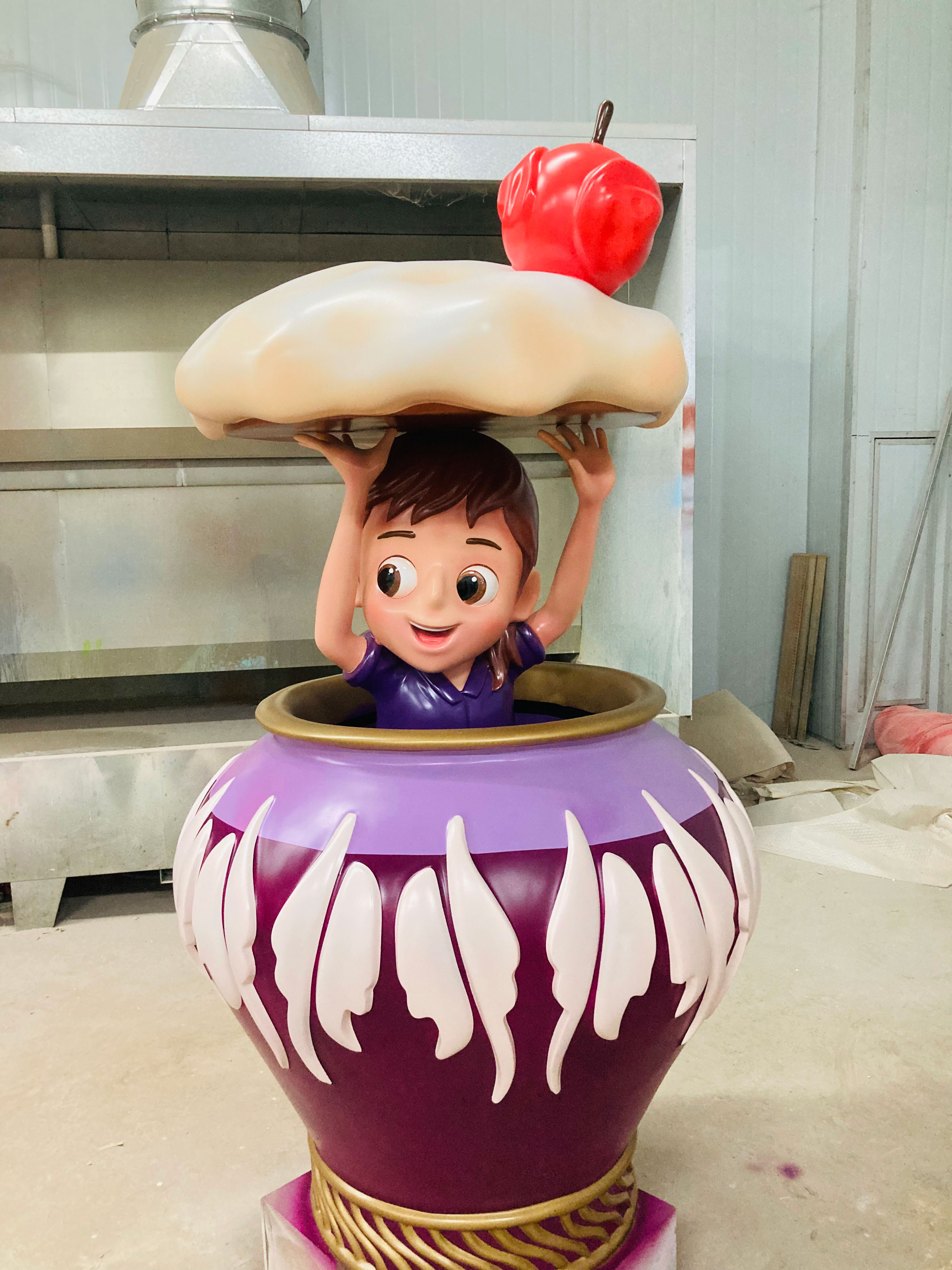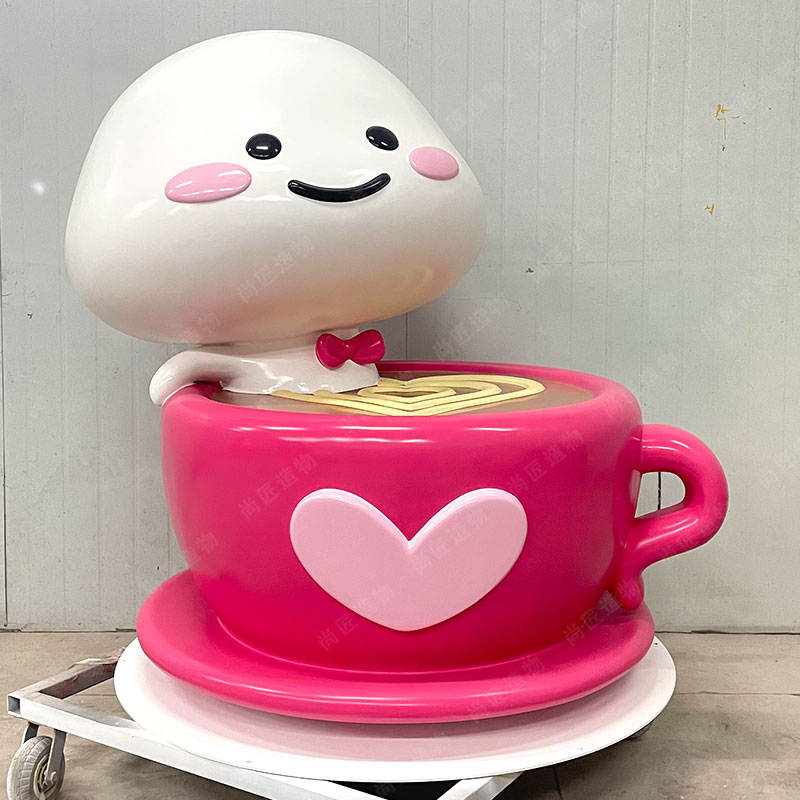Key Takeaways
Creating rust-resistant metal sculptures requires balancing material science with artistic execution. Three primary factors determine longevity: metal composition, protective treatments, and structural design. Weather-resistant alloys like stainless steel, bronze, or aluminum form the foundation, resisting oxidation while maintaining aesthetic appeal. Protective coatings, such as powder coating or clear acrylic sealants, act as barriers against moisture and pollutants. For intricate designs like Cartoon sculpture, welds and joints must be sealed to prevent water infiltration, which accelerates corrosion. Additionally, strategic design elements—such as sloped surfaces to shed rainwater—enhance durability. Even silver finishes, prone to tarnishing, stay vibrant through lacquers or electrochemical treatments. By integrating these principles, artists ensure outdoor sculptures withstand decades of exposure without sacrificing visual detail.

Weather-Resistant Alloys for Outdoor Sculptures
Outdoor sculptures require metals that withstand environmental challenges without sacrificing aesthetic appeal. Stainless steel, aluminum bronze, and Corten steel are popular choices due to their corrosion-resistant properties. Stainless steel contains chromium, which forms a passive oxide layer to block moisture and oxygen—key catalysts for rust. Aluminum bronze combines copper and aluminum, offering both durability and a warm metallic hue ideal for lifelike details. Corten steel, often called "weathering steel," develops a stable rust-like patina over time, eliminating the need for frequent maintenance.
"The alloy’s composition determines its battle against corrosion. For outdoor installations, prioritize metals that adapt to—rather than resist—natural weathering," advises sculptor Mara Jenson, known for her IP character sculpture designs.
When selecting alloys, consider local climate conditions. Coastal areas demand higher resistance to salt spray, making marine-grade stainless steel (316L) preferable. For colder regions, metals with low thermal expansion rates, like titanium alloys, reduce stress from freeze-thaw cycles. Manufacturers often combine these alloys with textured finishes to mimic organic surfaces while maintaining structural resilience.
Tip: Periodically inspect welded joints and seams, as uneven alloy mixtures or impurities can create weak points vulnerable to corrosion. Pairing weather-resistant metals with compatible protective coatings (discussed later) further extends the lifespan of outdoor artworks.

Protective Coatings to Prevent Metal Corrosion
Building on the use of weather-resistant alloys, protective coatings serve as a critical secondary defense against corrosion in outdoor metal sculptures. These coatings function by creating a physical barrier that shields the metal surface from moisture, oxygen, and pollutants. Common options include epoxy primers, polyurethane topcoats, and specialized ceramic-based sealants. For sculptures requiring a metallic finish, clear acrylic lacquers can preserve the appearance of silver or bronze while blocking environmental damage.
| Coating Type | Durability (Years) | UV Resistance | Application Method |
|---|---|---|---|
| Epoxy Primer | 5–8 | Moderate | Spray or brush |
| Polyurethane Topcoat | 7–10 | High | Spray |
| Ceramic Sealant | 10+ | Very High | Professional spray |
| Acrylic Lacquer | 3–5 | Moderate | Brush or aerosol |
Advanced coatings often incorporate inhibitors like zinc phosphate, which chemically neutralize corrosive agents. For realistic sculptures with intricate details, electrostatic spraying ensures even coverage without obscuring fine textures. Regular maintenance, such as reapplying wax-based protectants every 12–18 months, further extends coating effectiveness. This layered approach balances aesthetic preservation with structural longevity, complementing the sculpture’s underlying metal composition.
Structural Integrity in Harsh Climate Conditions
Maintaining structural integrity in outdoor metal sculptures requires balancing material strength with environmental adaptability. Sculptures exposed to extreme temperatures, heavy precipitation, or salt-laden air demand designs that account for thermal expansion, moisture retention, and wind forces. Engineers often incorporate internal frameworks using rigid alloys or reinforced supports to prevent warping or collapse. For example, stainless steel sculptures frequently employ hollow-core construction with strategic drainage channels to minimize water pooling, a common catalyst for rust and structural fatigue.
Critical joints and load-bearing sections are typically overbuilt by 15–20% compared to indoor pieces, compensating for prolonged stress from weather cycles. Cross-bracing techniques or triangular supports may be embedded within larger installations to enhance stability without compromising aesthetic details. Additionally, anchoring systems must adapt to local soil conditions—galvanized steel stakes or concrete footings prevent shifting in sandy or frost-prone environments. By anticipating how materials interact with specific climates, artists ensure their works withstand decades of exposure while preserving the precise contours essential to realistic forms.

Maintaining Silver Finishes on Metal Artworks
Preserving the lustrous appearance of silver finishes on outdoor sculptures requires a combination of advanced materials and consistent care. Protective coatings, such as clear lacquers or automotive-grade waxes, form the first line of defense against oxidation and environmental pollutants. These barriers shield the metal’s surface from moisture and UV exposure while allowing its natural metallic sheen to remain visible. For intricate pieces like kinetic sculptures, which often feature moving parts, applying non-yellowing, flexible sealants ensures protection without hindering motion.
Regular maintenance routines are equally critical. Gentle cleaning with pH-neutral solutions removes dirt and salt residues that accelerate corrosion. Soft microfiber cloths or brushes prevent micro-scratches that could compromise the finish. In coastal or high-humidity regions, biannual inspections help detect early signs of wear, allowing for timely touch-ups with specialized silver patina solutions. For artists and conservators, balancing aesthetic preservation with structural durability involves selecting alloys like aluminum-bronze or stainless steel, which naturally resist tarnishing while mimicking silver’s visual qualities. By integrating these practices, the longevity and brilliance of outdoor metal artworks remain intact, even under relentless weather conditions.
Welding Techniques for Durable Sculpture Frames
The longevity of outdoor metal sculptures depends heavily on the welding methods used to assemble their structural frames. Skilled artisans prioritize techniques that minimize weak points where moisture or contaminants could accumulate. For example, gas tungsten arc welding (GTAW), commonly known as TIG welding, produces clean, precise joints with minimal porosity—a critical factor in preventing rust formation. This method is particularly effective for joining stainless steel or aluminum alloys, which are favored for their corrosion resistance.
To enhance durability, welders often employ back purging, a process that shields the reverse side of welds from oxidation during fabrication. This technique ensures uniform metallurgical properties throughout the joint, reducing the risk of stress fractures in fluctuating temperatures. For larger sculptures, staggered welding patterns help distribute structural loads evenly, preventing localized fatigue. In cases where weight reduction is necessary without sacrificing strength, hybrid frameworks combining metal with lightweight materials like fiberglass sculpture components may be integrated. Proper post-weld treatments, such as grinding smooth seams and applying passivation acids to stainless steel, further fortify the sculpture’s resistance to environmental wear. These practices collectively ensure the internal framework remains intact, allowing the artwork to withstand decades of exposure while maintaining its structural and aesthetic integrity.
Choosing Corrosion-Resistant Metals for Art
Selecting the right metals is critical for ensuring outdoor sculptures withstand environmental challenges without losing their aesthetic appeal. Stainless steel, particularly grades 316 or 304, is a common choice due to its chromium content, which forms a passive oxide layer to resist rust. Aluminum is another lightweight option, naturally corrosion-resistant thanks to its oxidation process, though it requires alloying with elements like magnesium for added strength in coastal or industrial areas. For traditional or bronze-like finishes, copper alloys such as bronze or brass are favored; these metals develop a protective patina over time, reducing further degradation.
When choosing metals, artists must balance durability with practicality. For instance, while corten steel intentionally forms a rust-like surface to prevent deeper corrosion, it may not suit sculptures requiring a polished silver finish. Factors like local climate, exposure to saltwater or pollutants, and maintenance requirements also influence material decisions. By pairing corrosion-resistant metals with complementary fabrication methods, artists ensure their works retain structural and visual integrity for decades, even in harsh outdoor settings.
Longevity Factors in Realistic Metal Sculptures
The extended lifespan of realistic metal sculptures hinges on three interconnected principles: material selection, environmental adaptation, and structural design. While weather-resistant alloys like stainless steel or bronze form the foundation, their performance depends on compatibility with local climate conditions. Coastal installations, for example, require metals with heightened saltwater resistance, such as aluminum alloys or Corten steel, to counter accelerated corrosion from airborne salinity.
Structural durability extends beyond metal choice. Joints and load-bearing elements must account for thermal expansion—a critical factor in regions with extreme temperature swings. Reinforced internal frameworks distribute mechanical stress, preventing warping or fractures over decades of exposure. Additionally, designs that minimize moisture traps (e.g., angled surfaces or drainage channels) reduce standing water, a primary catalyst for rust formation.
Maintenance intervals align with these engineered safeguards. Protective coatings like powder-based epoxies or ceramic sealants degrade predictably when paired with compatible metals, allowing conservators to schedule refinishing before corrosion initiates. This systematic integration of chemistry, physics, and artistry transforms static metal into enduring representations of life, balancing aesthetic precision with resistance to entropy’s relentless forces.
Preventing Rust in Outdoor Artistic Installations
Preventing corrosion in outdoor metal sculptures requires a combination of material science and proactive maintenance. The process begins with selecting inherently rust-resistant metals, such as stainless steel, aluminum alloys, or weathering steel, which form stable oxide layers when exposed to moisture. For sculptures requiring silver-like finishes, electroplated zinc or titanium coatings provide a barrier against oxidation while maintaining visual appeal.
A second layer of defense involves applying industrial-grade protective coatings. Epoxy primers create adhesion for topcoats like polyurethane or fluoropolymer paints, which resist UV degradation and chemical exposure. For intricate details, microcrystalline wax or acrylic sealants fill microscopic pores in metal surfaces, blocking water infiltration.
Equally important are design choices that minimize corrosion risks. Sloped surfaces prevent water pooling, while strategic drainage channels redirect moisture away from structural joints. Regular maintenance—such as cleaning debris, inspecting for coating cracks, and reapplying protective waxes—extends longevity. In coastal or high-humidity regions, installing sacrificial anodes or using galvanic isolation techniques can neutralize electrochemical reactions that accelerate rust. By integrating these methods, artists ensure their installations withstand environmental challenges without compromising aesthetic integrity.
Conclusion
Creating rust-resistant metal sculptures that maintain their realistic appearance requires careful integration of material science and artistic craftsmanship. By selecting corrosion-resistant alloys like stainless steel or bronze, artists establish a strong foundation for outdoor durability. Protective coatings—from advanced epoxy primers to UV-stable clear sealants—act as essential barriers against moisture and pollutants. Structural design considerations, including proper drainage and reinforced welding points, prevent water accumulation that accelerates corrosion.
Regular maintenance plays a critical role in preserving metallic finishes, with gentle cleaning routines helping retain the sculpture’s visual authenticity over decades. While no material is entirely immune to environmental stresses, combining these strategies significantly extends the lifespan of outdoor artworks. Ultimately, the synergy between technical precision and artistic vision ensures that realistic sculptures withstand harsh conditions while continuing to captivate viewers with their enduring detail and luster.
FAQs
What metals are best for rust-resistant outdoor sculptures?
Stainless steel, bronze, and aluminum alloys are top choices due to their natural corrosion resistance. These metals form protective oxide layers that slow rust formation, even in humid or salty environments.
How do protective coatings extend a sculpture’s lifespan?
Epoxy primers, powder coatings, and clear lacquers act as barriers against moisture and pollutants. For silver finishes, UV-resistant acrylic sprays help retain shine while preventing tarnish caused by sun exposure.
Can welded joints weaken in harsh weather?
Proper welding techniques, like TIG (Tungsten Inert Gas) welding, ensure seamless joins that resist cracking. Regular inspections for stress points or gaps further prevent water infiltration and corrosion.
Does climate affect metal selection for outdoor art?
Yes. Coastal areas demand aluminum or marine-grade stainless steel to withstand salt spray, while industrial zones require metals with high resistance to acid rain, such as weathering steel.
How often should outdoor sculptures be maintained?
Annual cleaning with mild soap and water removes debris. Reapplying protective coatings every 3–5 years preserves finishes, though frequency depends on local weather severity.
Are patinas effective for rust prevention?
Yes. Applied patinas not only add aesthetic depth but also stabilize surfaces by creating a controlled oxidation layer. Wax coatings over patinas add extra moisture resistance.
What structural designs reduce rust risks?
Sloped surfaces and drainage channels prevent water pooling. Hollow frameworks should include ventilation to minimize internal condensation, a common cause of hidden corrosion.
 ch
ch English
English






